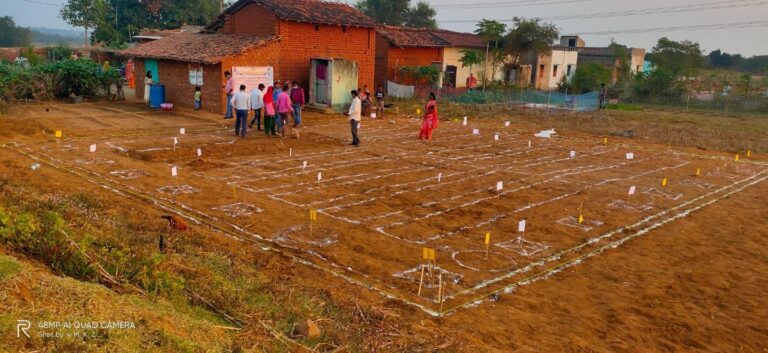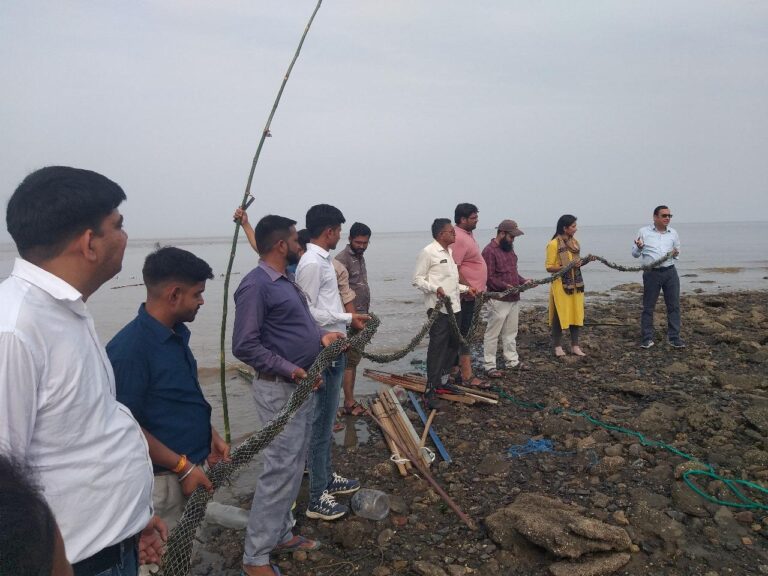Introduction
Traditional handicraft-making practices are followed and passed on to the next generation in the villages around the Mithapur district in Gujarat. These practices are not very well known in the world as these are performed by women who face mobility and social constraints in their household. They have lived and grown up in these circumstances for so long that many of their restrictions have integrated into their perception of their own agency. It will require continuous conversation with them and their communities to empower them to choose to enter the mainstream. The local handicraft in India is hidden in gali and villages which are not well explored. The women are flagbearers of the art and craft but they are caged in cultural norms which restrict them to popularise the art and craft.
Okhai is a social enterprise that has successfully empowered approx 30000 rural women in Mithapur, Gujarat, by reviving traditional handicrafts. This case study delves into the journey of Okhai, tracing its path from humble beginnings to becoming a leading brand in the fashion industry. This case study focuses on how Okhai has managed to create a sustainable model of social entrepreneurship and what changes could be made to ensure its long-term sustainability.
Details About the Project
Okhai was established in 2002 as a joint initiative, with the vision of preserving traditional crafts and creating economic opportunities for rural women artisans. Starting in 2002 in Mithapur, Gujarat, Okhai began with a small group of 500 artisans, mainly from communities like Rabaris, Vaghers, and Ahirs, who lacked stable income opportunities. The program provided these women with training in modern handicraft production, design, costing, and visual merchandising.
As the enterprise grew, Okhai expanded to other states and registered as a charitable trust in 2008. The supply chain, which starts in Ahmedabad, involves quality checks, fabric processing, and distribution to self-help groups (SHGs) for embroidery work. The finished garments undergo trials and quality checks before final production steps like washing, packaging, and barcoding.
Despite its success, the implementation of Okhai faced several challenges. One of the primary difficulties was building trust within the community, as many artisans were initially hesitant to embrace new methods and designs. Another challenge was ensuring consistent quality and timely production, given the dispersed nature of the artisans. Additionally, navigating the competitive market for handcrafted products and maintaining a sustainable business model required continuous innovation and adaptability.
A key strategy that contributed to the program’s success was its focus on community engagement and empowerment. By involving local women in decision-making and providing them with ownership over the production process, Okhai fostered a sense of pride and responsibility among the artisans. The program also emphasized continuous skill development and adaptation to market trends, which helped the artisans stay relevant and competitive. Moreover, the digital transformation during the COVID-19 pandemic enabled Okhai to reach a global audience, resulting in a significant increase in sales and impact.
A significant milestone for Okhai was its digital transformation during the COVID-19 pandemic, enabling it to transition 30,000 artisans to an online marketplace, thus reaching a global audience. This shift not only maintained but increased sales, with a 68% rise in the fiscal year 2020-2021, benefiting nearly 30,000 women artisans across India.
Okhai has also become a recognized sustainable online fashion brand, with a strong social media presence and successful engagement in exhibitions. The impact of the program goes beyond economic benefits, fostering social empowerment and changing societal perceptions toward women’s participation in livelihood activities.
Okhai’s journey underscores the importance of skill development, market linkages, and continuous innovation in creating sustainable economic opportunities for rural communities. Through its collaborative efforts, Okhai has transformed the lives of thousands of women, enabling them to lead independent and fulfilling lives.
Learnings
Okhai’s success offers several valuable lessons for organizations in the social sector.
Strong Community Engagement- One of the key takeaways is the importance of building strong community engagement and partnerships. Okhai’s ability to cultivate deep relationships with rural communities has been crucial to its success, ensuring that its initiatives are both relevant and sustainable. This approach was very important as the women involved were restricted from going out and marketing their products for so many years. This underscores the necessity of forging partnerships with local stakeholders to ensure the sustainability and relevance of its projects. This approach helps the community become responsible and owner and somehow pushes them to work on it.
Training with contemporary skills- Empowering local talent is another critical learning from Okhai. By training and mentoring rural women, Okhai has not only enhanced their skills but also empowered them to take on leadership roles. This approach fosters local capacity and creates a long-lasting impact, which is a strategy that can be applied across various sectors to ensure the sustainability of development initiatives.
Economic Empowerment- Economic empowerment through providing platforms for marginalized communities to sell their products is another significant lesson from Okhai. By enabling women to earn a sustainable income, Okhai has improved their financial security and quality of life and almost 5000 to 10000 Rs monthly income to every artisan. This model demonstrates how social enterprises can drive broader social changes, including enhancing financial independence and security.
Finally, Okhai’s respect for cultural identity and heritage highlights the importance of cultural sensitivity in community-driven projects. The preservation and promotion of traditional crafts not only contribute to the economic empowerment of artisans but also help maintain the cultural heritage of the communities involved. This cultural sensitivity can lead to stronger community buy-in and greater success for similar initiatives.
In conclusion, Okhai’s journey from a small initiative to a leading social enterprise offers valuable insights into how traditional crafts can be leveraged for economic empowerment and social change. The learnings from Okhai’s success are invaluable for organizations in the sector, providing a blueprint for creating sustainable, community-driven social enterprises that can achieve lasting and meaningful impact.
The enterprise started with 500 women and operates through a collaborative approach, working closely with self-help groups (SHGs) and local women artisans. The organization X has worked with women for many years to help them come on stage yet even today it is very difficult for them to take these women out of their system.
This is an inclusive model, which allows women to have a say in every aspect of the production process, from sourcing raw materials to crafting and marketing the final products.
The products created by Okhai are deeply rooted in the cultural identity and heritage of the communities where they originate. By offering a platform for these artisans to showcase and sell their handicrafts, Okhai has enabled women to earn a sustainable income, thereby improving their financial security and overall quality of life. Additionally, the recognition and appreciation they receive for their skills have significantly boosted their self-esteem and confidence.
As Okhai grew, it adapted to changing market conditions by embracing technology and innovation. The enterprise expanded its product lines, optimized processes, and developed a robust digital presence. The COVID-19 pandemic posed significant challenges, but Okhai successfully transitioned 30,000 artisans to an online marketplace, ensuring continued support for its artisans and expanding its reach to a global audience.




